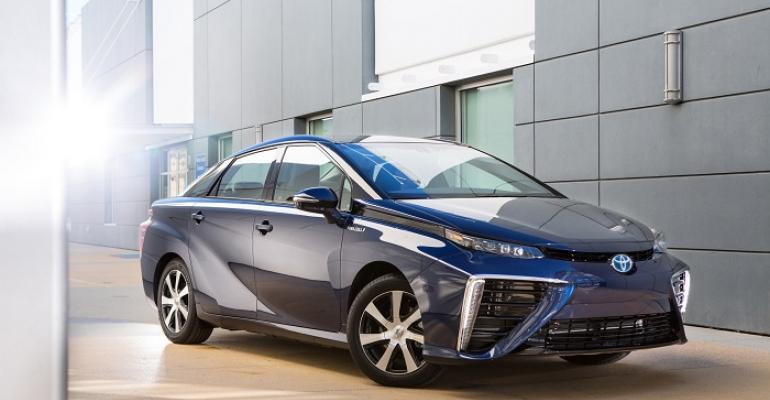NEWPORT BEACH, CA – With the launch of its first production fuel-cell vehicle slated for the U.S. next year, Toyota says it is partnering with an industrial fuel supplier to establish refueling stations in five U.S. states.
“Toyota’s vision of a hydrogen society is not just about building a great car, but ensuring accessible, reliable and convenient refueling for our customers,” Toyota North America CEO Jim Lentz tells media here tonight at an event for its upcoming FCV, which will be known as the Mirai.
To get the type of consumer acceptance for the car it desires, Toyota says the U.S. hydrogen fueling infrastructure needs to expand outside California, where most stations are located today.
Toyota will collaborate with Air Liquide of France on 12 hydrogen stations for Connecticut, Massachusetts, New Jersey, New York, and Rhode Island.
Those states abide by the same strict guidelines for zero-emission vehicles as does California.
Toyota says the stations will be located strategically around New York City and Boston, with specifics due in coming months.
The Mirai is set to go on sale in the northeastern U.S. in 2016, at which time the stations should be ready, Toyota says.
In California, Toyota already has partnered with FirstElement, loaning $7.3 million to the upstart hydrogen infrastructure firm led by former General Motors and Hyundai Motor America marketing chief Joel Ewanick for 19 hydrogen stations in the state.
Toyota earlier stated sales of its production FCV were to commence in California in 2015.
Speaking at a similar event in Japan Monday, Toyota CEO Akio Toyoda says the Mirai, Japanese for “future,” finally is ready for the market after years in development.
“After surviving millions of miles on the test track and 10 years of testing on public roads in freezing cold and scorching heat, after passing extensive crash tests, and after working with local governments and researchers around the world to help make sure it is easy and convenient to refuel, we are ready to deliver,” Toyoda says.
The Mirai will have a range of 300 miles (483 km) on a tank of hydrogen and can be refueled in less than five minutes, similar to the range and refueling time of most production FCVs whose details have been announced, including Hyundai’s already-on-sale Tucson.
CEO Toyoda, who has been pushing the Japanese automaker toward building more athletic vehicles, promises the Mirai will be fun-to-drive, thanks to its low center of gravity.





